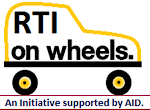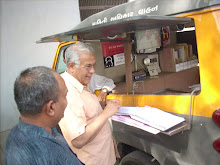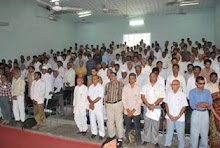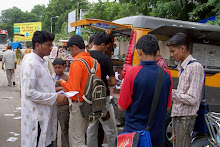Business Today: Delhi: Thursday, 17 July 2025.
As of June 2025, UIDAI data shows that 142.39 crore Aadhaar numbers remain active.
An RTI query filed by India Today TV has revealed that the Unique Identification Authority of India (UIDAI) has deactivated just 1.15 crore Aadhaar numbers since the programme began 14 years ago a figure that stands in sharp contrast to India’s average annual mortality rate.
As of June 2025, UIDAI data shows that 142.39 crore Aadhaar numbers remain active. According to the United Nations Population Fund, India’s population stood at 146.39 crore in April 2025. Yet between 2007 and 2019, India recorded an average of 83.5 lakh deaths per year, as per the Civil Registration System (CRS). Despite this, UIDAI has deactivated less than 10 per cent of the Aadhaar numbers that should logically have been removed.
Responding to the RTI, UIDAI said, "As and when RGI shares death records information along with Aadhaar numbers to UIDAI; UIDAI, after due process, deactivates the Aadhaar number of the deceased Aadhaar holders."
Officials acknowledged that deactivation is cumbersome and relies on external data such as death certificates and notifications from state governments or family members. UIDAI also admitted that it does not track Aadhaar exclusions and maintains "no such information" on the number of residents who do not possess an Aadhaar number.
The first Aadhaar number was issued in September 2010 in Nandurbar, Maharashtra. Yet despite more than a decade of operation, UIDAI does not maintain year-wise deactivation data. In response to a query on annual figures for the past five years, the authority stated: "No such information is maintained year-wise. However, the total number of Aadhaar numbers deactivated on the basis of death report data received from RGI, since the inception of the Aadhaar programme till 31.12.2024, is 1,14,69,869."
To streamline the process, the UIDAI issued revised deactivation guidelines in August 2023. These mandate that death records from the Civil Registration System must first match Aadhaar data with at least 90% name match and 100% gender match. If a match is confirmed, UIDAI checks whether the number was used for biometric authentication or updated after the date of death. If no activity is found, the Aadhaar number is deactivated. In case of post-death activity, the system flags the case for further verification.
If an Aadhaar number already marked as deactivated is used again, UIDAI sends an alert to the user, who must visit an Aadhaar centre or regional office for biometric verification to request reactivation.
The failure to update records of the deceased has also skewed Aadhaar saturation rates, particularly in states like Bihar. During the recent Special Summary Revision (SSR) of electoral rolls, several districts in the Seemanchal region Kishanganj (126%), Katihar and Araria (123% each), Purnia (121%), and Sheikhpura (118%) reported Aadhaar saturation rates above 100%.
Aadhaar saturation is defined as the ratio of Aadhaar holders to the projected population. UIDAI clarified in the RTI response that unremoved records of the deceased contribute to inflated local Aadhaar numbers: "When Aadhaar numbers of the deceased are not promptly deactivated, they continue to inflate local saturation figures, sometimes resulting in more Aadhaar holders than actual residents."
UIDAI steps up efforts to deactivate Aadhaar
UIDAI has introduced several measures to ensure the responsible and secure use of Aadhaar numbers, especially after the death of a cardholder. Recognising the risk of identity misuse, UIDAI is proactively deactivating Aadhaar numbers of deceased individuals after thorough validation. As part of this effort, UIDAI has received around 1.55 crore death records from 24 States and Union Territories through the Registrar General of India’s Civil Registration System, resulting in the deactivation of approximately 1.17 crore Aadhaar numbers.
To simplify the process for citizens, UIDAI launched the “Reporting of Death of a Family Member” service on the myAadhaar portal in June 2025. This allows family members to submit death details of their relatives using Aadhaar and Death Registration Numbers, enabling secure and verified deactivation. Integration of other States/UTs with this portal is ongoing.
UIDAI is also collecting death records from banks, Aadhaar ecosystem partners, and State Governments. As a pilot, data of Aadhaar holders aged 100+ is being shared with States to verify their living status. UIDAI recommends families report deaths promptly on the myAadhaar portal to help prevent misuse of the deceased’s digital identity.
As of June 2025, UIDAI data shows that 142.39 crore Aadhaar numbers remain active.
An RTI query filed by India Today TV has revealed that the Unique Identification Authority of India (UIDAI) has deactivated just 1.15 crore Aadhaar numbers since the programme began 14 years ago a figure that stands in sharp contrast to India’s average annual mortality rate.
As of June 2025, UIDAI data shows that 142.39 crore Aadhaar numbers remain active. According to the United Nations Population Fund, India’s population stood at 146.39 crore in April 2025. Yet between 2007 and 2019, India recorded an average of 83.5 lakh deaths per year, as per the Civil Registration System (CRS). Despite this, UIDAI has deactivated less than 10 per cent of the Aadhaar numbers that should logically have been removed.
Responding to the RTI, UIDAI said, "As and when RGI shares death records information along with Aadhaar numbers to UIDAI; UIDAI, after due process, deactivates the Aadhaar number of the deceased Aadhaar holders."
Officials acknowledged that deactivation is cumbersome and relies on external data such as death certificates and notifications from state governments or family members. UIDAI also admitted that it does not track Aadhaar exclusions and maintains "no such information" on the number of residents who do not possess an Aadhaar number.
The first Aadhaar number was issued in September 2010 in Nandurbar, Maharashtra. Yet despite more than a decade of operation, UIDAI does not maintain year-wise deactivation data. In response to a query on annual figures for the past five years, the authority stated: "No such information is maintained year-wise. However, the total number of Aadhaar numbers deactivated on the basis of death report data received from RGI, since the inception of the Aadhaar programme till 31.12.2024, is 1,14,69,869."
To streamline the process, the UIDAI issued revised deactivation guidelines in August 2023. These mandate that death records from the Civil Registration System must first match Aadhaar data with at least 90% name match and 100% gender match. If a match is confirmed, UIDAI checks whether the number was used for biometric authentication or updated after the date of death. If no activity is found, the Aadhaar number is deactivated. In case of post-death activity, the system flags the case for further verification.
If an Aadhaar number already marked as deactivated is used again, UIDAI sends an alert to the user, who must visit an Aadhaar centre or regional office for biometric verification to request reactivation.
The failure to update records of the deceased has also skewed Aadhaar saturation rates, particularly in states like Bihar. During the recent Special Summary Revision (SSR) of electoral rolls, several districts in the Seemanchal region Kishanganj (126%), Katihar and Araria (123% each), Purnia (121%), and Sheikhpura (118%) reported Aadhaar saturation rates above 100%.
Aadhaar saturation is defined as the ratio of Aadhaar holders to the projected population. UIDAI clarified in the RTI response that unremoved records of the deceased contribute to inflated local Aadhaar numbers: "When Aadhaar numbers of the deceased are not promptly deactivated, they continue to inflate local saturation figures, sometimes resulting in more Aadhaar holders than actual residents."
UIDAI steps up efforts to deactivate Aadhaar
UIDAI has introduced several measures to ensure the responsible and secure use of Aadhaar numbers, especially after the death of a cardholder. Recognising the risk of identity misuse, UIDAI is proactively deactivating Aadhaar numbers of deceased individuals after thorough validation. As part of this effort, UIDAI has received around 1.55 crore death records from 24 States and Union Territories through the Registrar General of India’s Civil Registration System, resulting in the deactivation of approximately 1.17 crore Aadhaar numbers.
To simplify the process for citizens, UIDAI launched the “Reporting of Death of a Family Member” service on the myAadhaar portal in June 2025. This allows family members to submit death details of their relatives using Aadhaar and Death Registration Numbers, enabling secure and verified deactivation. Integration of other States/UTs with this portal is ongoing.
UIDAI is also collecting death records from banks, Aadhaar ecosystem partners, and State Governments. As a pilot, data of Aadhaar holders aged 100+ is being shared with States to verify their living status. UIDAI recommends families report deaths promptly on the myAadhaar portal to help prevent misuse of the deceased’s digital identity.















































































